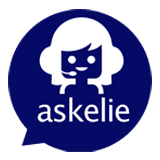Public sector accessibility is failing in the UK. Studies show that only 2 percent of court buildings are fully accessible. At the same time, many councils and public services still exclude disabled users through inaccessible communication. These gaps are being challenged in the press and through legal action, proving that accessibility is no longer optional.
The Equality Act and Public Sector Accessibility
The Equality Act 2010 requires public sector bodies to make reasonable adjustments so that disabled people are not placed at a disadvantage. This duty does not only apply to physical spaces such as buildings and transport. It also covers how written information is provided to citizens.
Too often, accessibility conversations stop at ramps, lifts, or toilets. But communication is just as critical. Letters, policies, and decisions must be accessible to all, including people with learning disabilities. Failure to make adjustments in this area can lead to complaints, investigations, or even court action. Compliance with the Equality Act is not optional, and public sector accessibility must extend to every channel.
Easy Read: A Key Part of Public Sector Accessibility
One of the most effective ways to improve accessibility in communication is Easy Read. Easy Read is a format designed to make documents more accessible for people with learning disabilities. It uses:
- Simple, clear words
- Short sentences
- Logical structure
- Images to support meaning
- Larger fonts and clear white space
This is not about oversimplification. It is about clarity, fairness, and inclusion. Every day, councils and NHS services send out documents about benefits, housing, healthcare, and legal rights. If these are not accessible, they cannot be acted on. For many people, Easy Read is the difference between receiving information they can use or being excluded altogether. It should be seen as a core element of public sector accessibility.
The Cost of Poor Public Sector Accessibility
For busy teams, producing Easy Read documents may feel like an added task. But the costs of failing to do so are much higher. These include:
- Increased contact centre calls and pressure on frontline teams
- Repeated mailings when citizens do not understand the first communication
- Formal complaints or escalation to legal action
- Safeguarding concerns if people miss critical appointments or instructions
- Loss of public trust and reputational damage
Doing nothing is rarely cheaper in the long run. Building public sector accessibility into communication at the start reduces confusion, lowers costs, and improves outcomes.
How askVERA Improves Public Sector Accessibility
askVERA is askelie’s Easy Read automation platform designed for councils, NHS services, charities, and housing teams. It transforms complex documents into accessible formats in minutes. With askVERA, teams can:
- Upload a PDF or Word file
- Choose the number of sections or key points
- Flag important dates, actions, or details
- Generate an Easy Read version using AI
- Review, edit, and publish instantly
askVERA is trained on real public sector documents, requires no technical background, and scales across entire organisations. It helps services embed accessibility into their day-to-day operations instead of treating it as an afterthought.
Accessible by Design, Not as a Bolt-On
Accessibility should not be bolted on at the end of a project. With askVERA, councils and services can:
- Demonstrate Equality Act compliance
- Improve service delivery by reducing errors and delays
- Free up staff time by cutting repeat queries
- Reach vulnerable citizens more effectively
- Support wider goals around inclusion and fairness
Embedding public sector accessibility by design ensures that all citizens receive the information they need in a usable format.
Practical Next Steps for Councils and Services
To improve accessibility and compliance, organisations should:
- Train staff on accessibility standards and Easy Read best practice
- Audit existing communication for accessibility gaps
- Introduce Easy Read formats for critical services such as housing, benefits, and healthcare
- Embed accessibility requirements into procurement and supplier contracts
- Use tools like askVERA to deliver consistent, compliant communication at scale
These steps ensure that accessibility is not a tick-box exercise but a practical part of how public services operate.
Doing the Right Thing Makes Strategic Sense
Accessible communication improves outcomes for everyone. For public sector teams under pressure, tools like askVERA provide a cost-effective way to meet legal duties, reduce confusion, and strengthen trust with communities. Investing in public sector accessibility is both the right thing to do and the smart thing to do.
Want to learn how askVERA can help your team? Contact us at hello@askelie.com.



Comments are closed